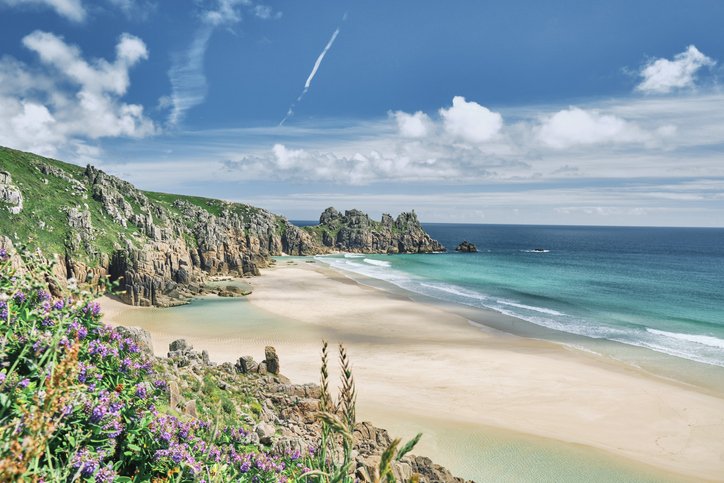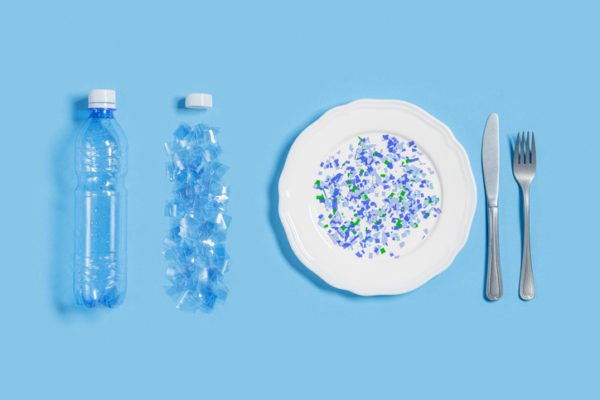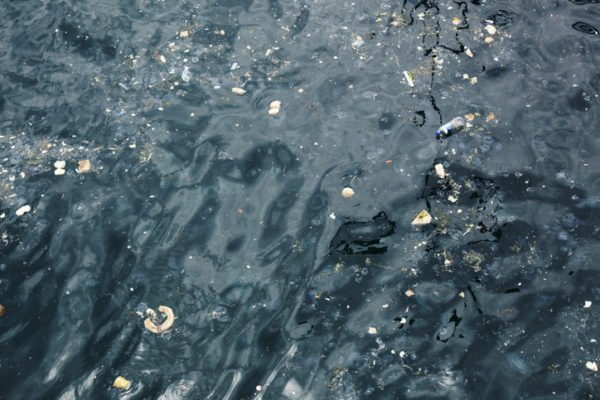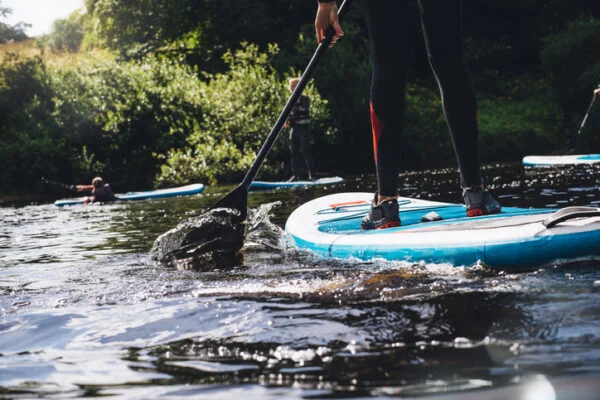Microplastics map
From the 2022 samples, a map has been produced which estimates summer microplastics concentration in the seas around the UK.
This is currently taken from a small dataset but, as the four-year project continues and more samples are taken, the distance between sample sites will decrease and the accuracy of this map will increase.
Comparisons between years will also be possible, determining if the problem is getting worse or better.
An indicator of warming seas?
University scientists have also been analysing samples of underwater marine sounds. Some 376 were examined in more detail; of those, 97 instances were identified as boats, 27 as cetacean (whales, dolphins and porpoises) and 48 as snapping shrimp.
Researchers highlighted the presence of snapping shrimp in Scotland as unusual and concerning.
‘Hearing the snapping shrimp so far north up in the east of Scotland is of particular interest’, said Dr Fay Couceiro. ‘They are normally found in more southern areas and their movement may be an indicator of climate change and warming seas.’
A survey of marine biodiversity
Environmental DNA (eDNA) samples were also collected by the crews to survey marine biodiversity. This involved filtering 1l of water twice a day to capture the tiny traces of DNA that animals leave behind like fingerprints in the water.
From just 77 litres of water, about a quarter of a bathtub, 82 marine vertebrate species were identified. These ranged from critically endangered European eels and endangered undulated rays to commercial fish such as herring, salmon and cod, as well as many other beautiful fish such as wrasse, gobies and garfish.
Mammals were also detected (seals, porpoises and dolphins) and even some seabirds such as the vulnerable Atlantic puffin.
Samples were analysed by eDNA specialist company NatureMetrics.
‘Making this incredible journey around the coast of Great Britain, you can’t help but be awed by the beauty and diversity of this island we live on. We had many incredible encounters with wildlife, including dolphins, porpoises, seals and seabird colonies, but most of the biodiversity is under the water and we had no idea what species were there until we got home and analysed the DNA we’d filtered out of the water.
‘Even after all these years it amazes me how much biodiversity we can detect in these small volumes of water, and the way it lets us see how different species are distributed in the environment, from tiny gobies up to dolphins and seals. I can’t wait to see how this data develops over the next few years.’
DR KAT BRUCE
NatureMetrics founder and member of one of the rowing crews
Mapping species diversity
While the observation of southern species moving north is more evidence of warming seas, it also highlights the dangers of losing some of the northern species from UK waters.
Scientists believe it is not just climate change that can cause disruptions to species – pollution events and fishing can also negatively impact biodiversity.
In contrast, conservation projects can improve biodiversity in an area. ‘Mapping the biodiversity of UK seas annually is a great way to monitor these impacts on the species diversity’, said Dr Couceiro.
‘In many species, eating large numbers of microplastics has negative impacts ranging from reduced growth, to aberrant development, to cell toxicity. Considering the possible negative impacts, it is essential that we have a better understanding of how many microplastics are in our waters and that we have a way to monitor them.’
DR FAY COUCEIRO
School of Civil Engineering and Surveying and researcher from Revolution Plastics at the University of Portsmouth
‘The tip of the iceberg’
The results of the three data sets collected (microplastics, sound and eDNA) during last year’s race each give an important contribution to the knowledge of UK seas.
But the scientists believe the real strength of the project is how these data sets are combined going forward. They believe the results seen so far are just the tip of the iceberg.
The next data collection will take place in this year’s GB Row Challenge event starting on 4th June 2023 at Tower Bridge, London.
 Play Video about This Rock Might Just Save The World
Play Video about This Rock Might Just Save The World Play Video about Play 2 hours of rock
Play Video about Play 2 hours of rock Play Video about Play 2 hours of brook
Play Video about Play 2 hours of brook Play Video about Play 2 hours of sheep
Play Video about Play 2 hours of sheep















































